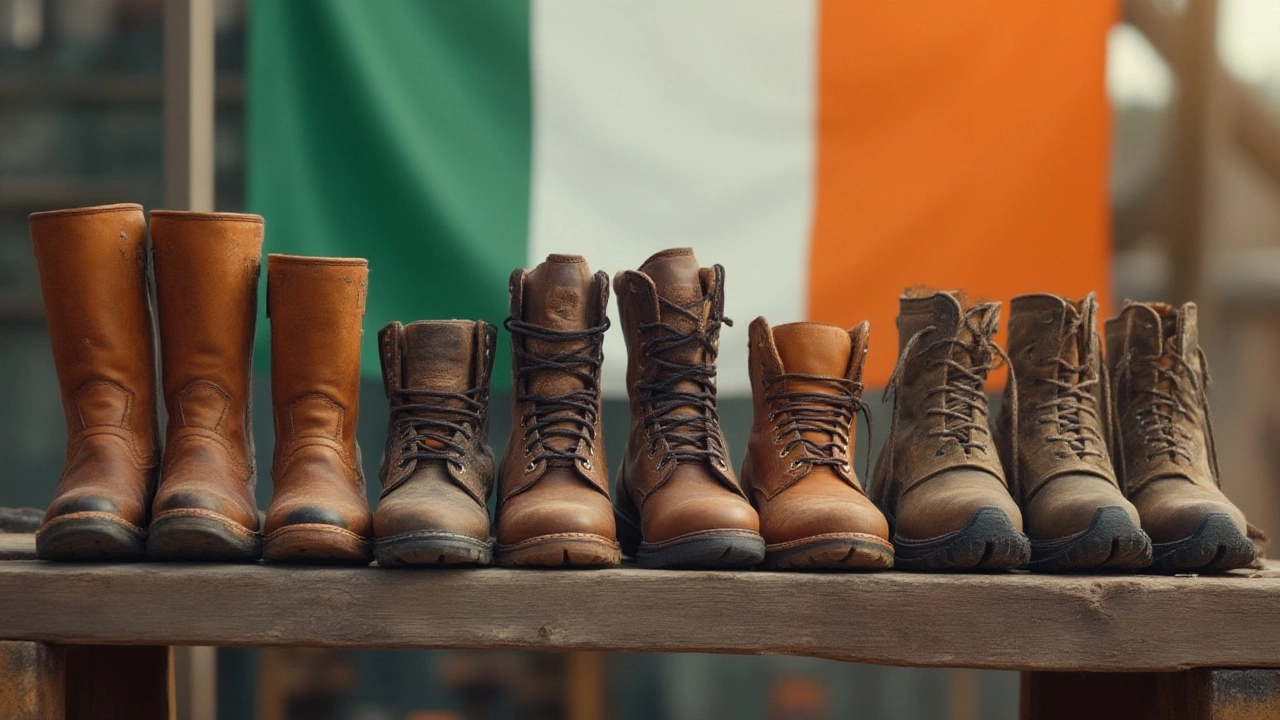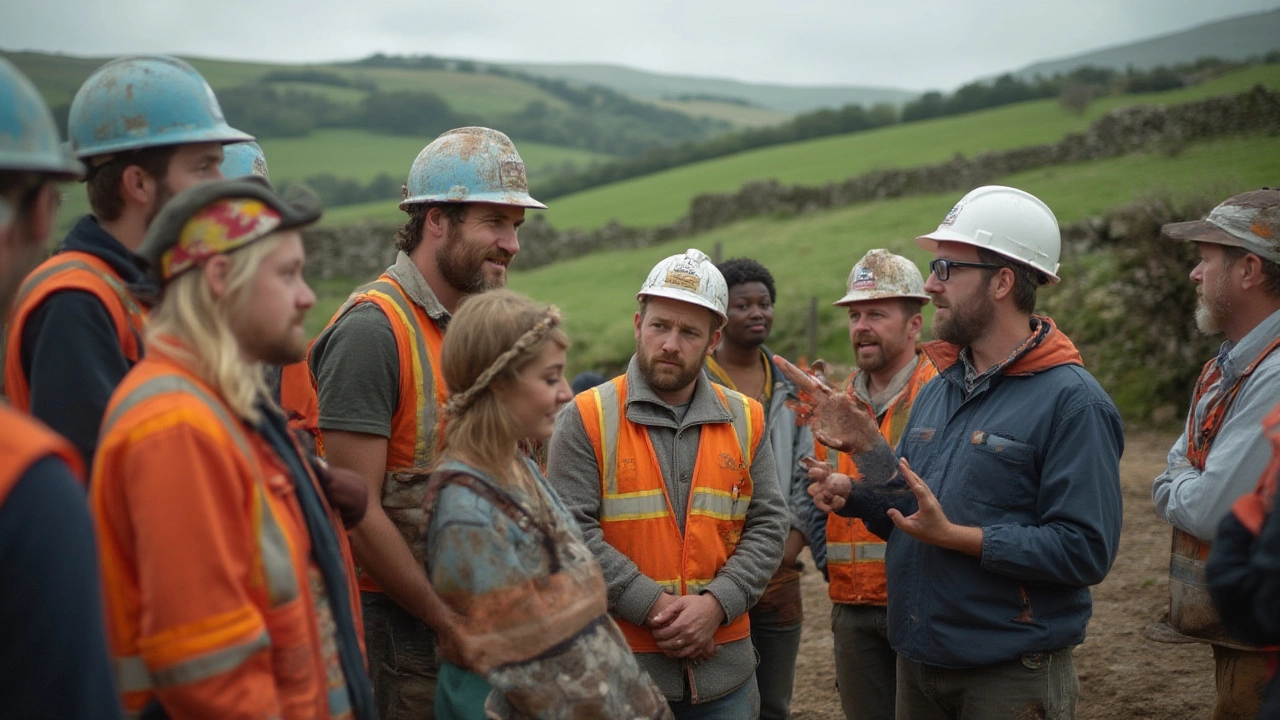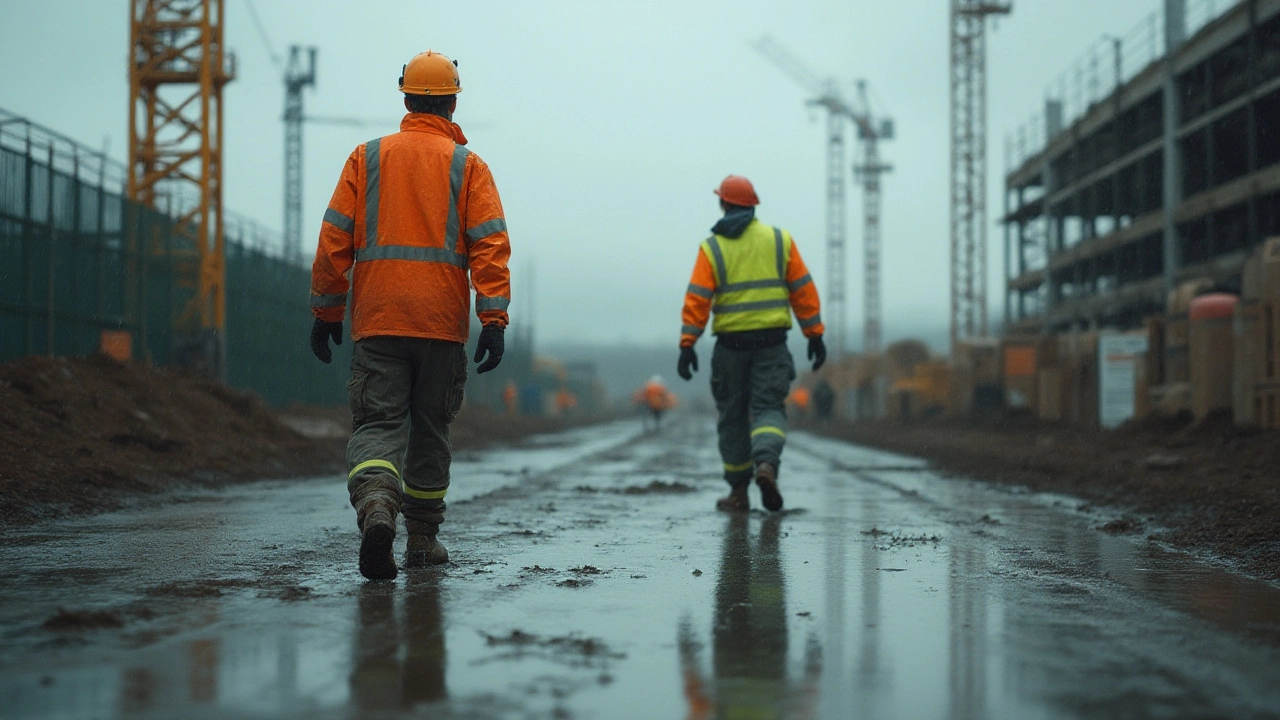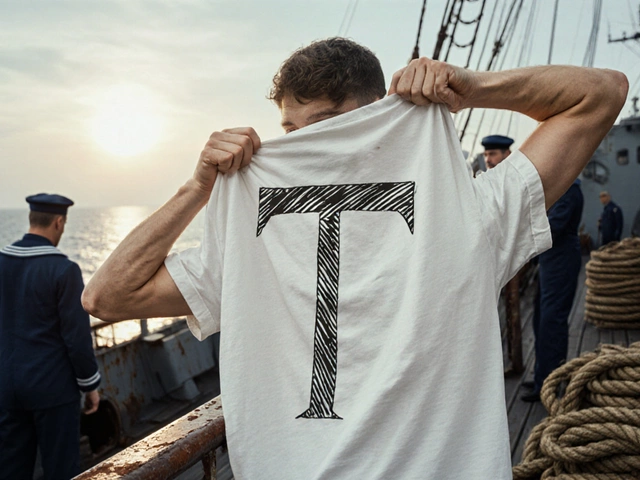If you stroll by any Irish building site—or even glance at a roadworks crew fixing the tarmac after a tough winter—you’ll spot a familiar sight: flourescent vests, hard hats, and a solid line-up of chunky, muddy boots. But there’s always one newbie turning up in pristine trainers or, heaven forbid, those sliding canvas slip-ons. In Ireland, where temperamental weather and strict safety rules go hand in hand, wearing the wrong footwear on a job site isn’t just a fashion faux pas—it’s a shortcut to a world of pain and paperwork. This is especially true with our mix of soggy ground, scattered sharp objects, and surprise puddles. So, what type of footwear should never see the inside of an Irish job site gate? Grab a mug of Barry’s and let’s get stuck in.
Why Proper Footwear Matters on Irish Sites
It’s not only about sticking to Health and Safety Authority (HSA) regulations—though the HSA will bring the hammer down if you aren’t in compliance. More than 700 people a year in Ireland wind up with work-related foot and leg injuries, with nearly half directly caused by poor footwear choices. That might sound dramatic, but think about how quickly a slip, trip, or fall happens outdoors, especially around Dublin or Galway when the clouds open up. Footwear that’s not up to the job can turn a minor mishap into a serious incident, with months off work and insurance headaches.
Irish construction sites, for instance, often feature mix-and-match surfaces: slick containers, rough concrete, stray nails from timber frames, even cattle fields during rural projects. The wrong type of shoe just isn’t built for these shifting conditions. Flip-flops and runners don’t have steel toe caps. Loafers let in water faster than an Irish Riverdance. Safety boots with SB, S1P, or S3 ratings are a legal must because they shield toes, support ankles, and stop crush injuries—something Dunnes or Penneys shoppers may not know unless they’ve worked on-site.
If you ever chat with a site supervisor outside a Centra, they’ll tell you one wrong shoe can hold up an entire job. Not only because you’re slowing down the crew, but because any accident has to be reported to the HSA, and that’s paperwork that could haunt a foreman for years. So, in Ireland’s rainy, rocky, and muddy jobsites, proper PPE footwear is a basic survival tool, not an optional extra.
The Offenders: Footwear That Should Never Be Worn
Let’s get really specific, because general warnings don’t stop bad choices on Monday mornings. Here’s what's absolutely forbidden on an Irish job site—whether you’re building an extension in Cork, fixing fibre broadband in rural Mayo, or tiling the GPO steps in Dublin.
- Trainers, Sneakers, and Runners. Yes, Reebok makes comfy classics and Adidas Stan Smiths look sharp, but trainers have no place on a building site. They lack a steel toe cap, aren’t water resistant, and will happily soak up hazardous liquids. A loose nail or falling block will go straight through those thin soles.
- Canvas Shoes. Vans, Toms, or any other fabric slip-ons turn to mush in Irish weather and offer zero crush or cut resistance. Also, the soles are usually too smooth, making them perfect for slipping on a slick plank.
- Sandals or Flip-Flops. This barely needs explaining. You’re just begging for a broken toe or a nasty infection if you put your bare skin anywhere near a job site. Even on hot days, these are a non-starter.
- Wellies Without Safety Rating. Standard wellington boots—like those you’d wear to the Ploughing Championships—won’t cut it unless they’re certified safety boots with steel toes. Regular wellies twist underfoot and tear easily, especially in stony ground.
- Loafers and Dress Shoes. Occasionally you’ll see a suit-wearer wander onto site before a photo or meeting. Shiny brogues and slip-ons are no good here: they scuff, slip, and crumple under the first bit of pressure.
To make it crystal clear, here’s a table showing what’s allowed versus banned on Irish job sites:
| Footwear Type | Allowed on Irish Job Site? | Reason |
|---|---|---|
| Steel-Toe Safety Boots (SB, S1P, S3) | Yes | Required by HSA, toe/crush/water/penetration resistant |
| Wellies (No Safety Rating) | No | No toe protection, easy to puncture |
| Trainers/Sneakers | No | Lack toe protection, slip risk, not waterproof |
| Loafers/Dress Shoes | No | No ankle or toe support, slip risk |
| Sandals/Flip-Flops | No | Bare skin exposed, no protection |
| Certified Safety Wellington Boots | Yes | Must meet safety requirements, ideal for wet/mucky sites |

What Makes Footwear Safe for Irish Sites?
This country’s unpredictable climate means safety footwear needs to do more than just tick a box. Irish Health and Safety guidelines require SB, S1P, or S3 rated boots, but what exactly does that mean? Here’s the rundown:
- SB (Safety Basic): Steel toe caps, but not much else.
- S1P: Steel toe, anti-static with pircing resistance and anti-slip soles. Standard for most Irish jobs.
- S3: S1P features plus midsole protection for working outdoors and waterproof uppers. This is what you’ll want for anything from roadworks in Limerick to forestry maintenance in Wicklow.
Look for brands with good local support like Portwest, which is Irish and knows our weather inside out. You’ll also spot familiar names like CAT or DeWalt on sites, but always check if the boots have certification marks (like CE or EN ISO 20345) before buying from places like Woodies, Screwfix, or a local co-op. Don’t get caught by fakes sold online—there’s plenty of knock-off brands with low-price tags but no real protection. A survey from the Irish Small Firms Association found nearly 30% of site injuries in 2024 were linked to non-compliant PPE or substandard purchases from non-official websites.
Insulation is another big consideration. Irish winters mean frozen ground long after sunrise, especially for anyone working in the west or the Midlands. Breathable, waterproof, and quick-drying linings are your best friends. According to Met Éireann, 2024 had 143 days of rain in Dublin and even more in the northwest, so basic waterproof boots are a no-brainer.
Local Tips for Getting the Right Job Site Footwear
If you’re new to Irish job sites or just looking to upgrade, here’s some wisdom from the lads and lasses with socks older than you. First off, don’t skimp on quality. Those €40 deals might save you a few quid now, but you’ll be shelling out more after your toes take a battering. Go to a proper workwear shop, not the back row of a market stall. Shops like Safety Direct (Galway-based), Eng-Weld, or even your local hardware store will be able to show you the proper safety certificates.
Break new boots in properly before you rock up to a muddy estate in the Liberties or a wind-battered office park in Cork. A few short walks around the block will stop the blisters before you’re shifting bricks for ten hours. Make sure your boots fit well—too loose and you’ll trip, too tight and you’ll struggle with swelling by lunchtime. Double-check stitching and soles: cracked or peeling soles will leak faster than you can say “Dublin drizzle.”
- Buy boots late in the day (Irish feet swell after standing or walking).
- Always try on with thick work socks—save the novelty socks for the pub!
- Replace boots once a year minimum, or sooner if you notice tears or faulty soles.
A lot of Irish employers now offer PPE allowances. If you’re self-employed, keep your receipts—safety boots are tax-deductible as PPE. Check with Revenue.ie before you claim. And don’t forget, HSA inspectors actually walk sites all over Ireland—if you’re caught without proper boots, the fine is €3,000 on the spot or worse if there’s an injury. Gardaí will rarely get involved unless someone is seriously hurt, but no one wants that hassle at any time of year.

Footwear Safety Rules: What Every Worker in Ireland Should Know
It’s not just what you wear, but how you wear it. Laces loose? Tucked-in trousers? Even the best boot is useless if worn wrong. HSA backs up frequent training for proper donning and doffing of PPE, including lacing boots tight and tucking in trousers to keep water and debris out.
Don’t rely on old boots you found in the shed—even if they look up to scratch, Irish sites eat away at rubber and stitching, especially with the constant wet-dry cycle. Keep a spare pair just in case: there’s nothing worse than sitting out a shift because you lost a sole to a loose paving slab. Clean boots every evening and dry them slowly (never on the radiator, as steam ruins glue and weakens leather!).
If you’re hiring new staff, check their boots before they start, and make sure their PPE comes from an approved vendor. The HSA has a quick guide online, and most big sites in Dublin, Limerick, and Cork run audits every quarter. Always carry an extra pair in the van—if you’re called onto a site unexpectedly, you won’t get past security in trainers. Finally, remember PPE only works if you use it right. Stay safe, comfortable, and ready for anything—rain, hail, or shine. The site can wait for a coffee, but it won’t wait for your safety.





